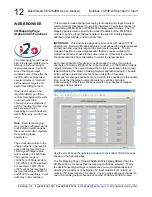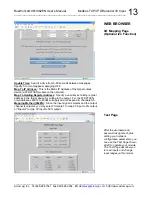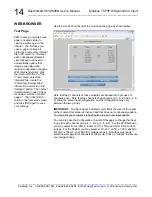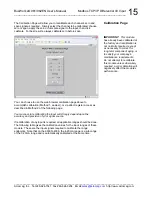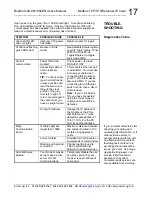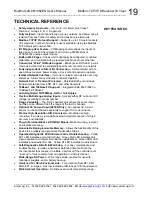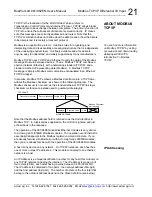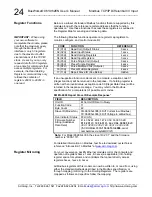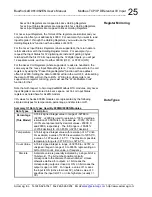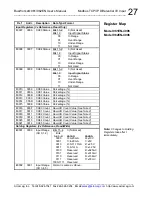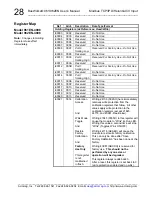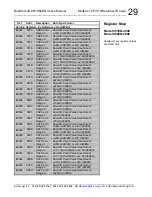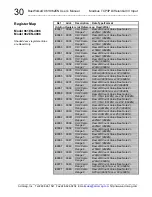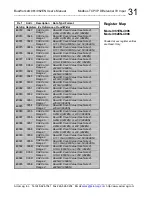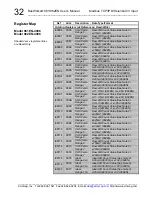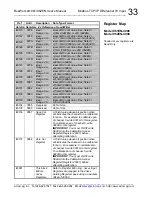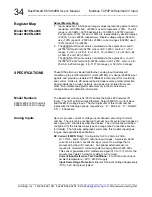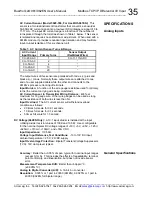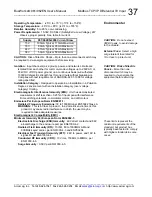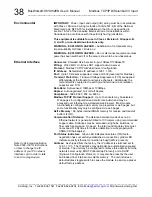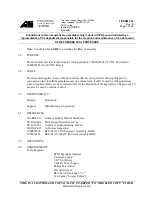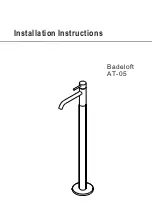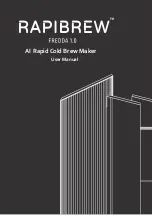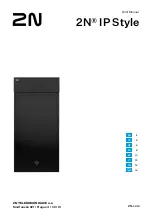
BusWorks® 961/962EN User’s Manual Modbus TCP/IP Differential I/V Input
___________________________________________________________________
_______________________________________________________________________________________
Acromag, Inc. Tel:248-624-1541 Fax:248-624-9234 Email:
sales@acromag.com
http://www.acromag.com
23
DHCP refers to Dynamic Host Configuration Protocol and is a method used
to dynamically assign temporary numeric IP addresses as required. A
DHCP server maintains a pool of shared IP addresses which are recycled.
When a DHCP device wants to use a TCP/IP application, it must request an
IP address from the DHCP server. The DHCP server will check the shared
supply, and if all addresses are in use, the server will send a busy signal to
the client which tells it to try again later. Static addresses will ensure a
connection every time, but dynamic addresses do not.
DNS refers to the Domain Name System or Domain Name Server and refers
to the system used to associate an alphanumeric character string with a
numeric IP address. The DNS is actually a distributed database of domain
names and corresponding IP addresses. The DNS allows us to use
Acromag.com as an IP address rather than a complicated string of numbers.
Note that name servers contain information on some segment of the domain
name space and make this information available to clients called
resolvers
.
Modbus registers are organized into reference types identified by the leading
number of the reference address:
Reference Description
0xxxx Read/Write Discrete Outputs or Coils. A 0x reference
address is used to drive output data to a digital output
channel.
1xxxx Read
Discrete Inputs. The ON/OFF status of a 1x
reference address is controlled by the corresponding
digital input channel.
3xxxx Read
Input Registers. A 3x reference register contains a
16-bit number received from an external source—e.g. an
analog signal.
4xxxx Read/Write
Output or Holding Registers. A 4x register is
used to store 16-bits of numerical data (binary or decimal),
or to send the data from the CPU to an output channel.
Note:
The ON/OFF state of discrete inputs and outputs is represented by a
1 or 0 value assigned to an individual bit in a 16-bit data word. This is
sixteen 0x or 1x references per data word. With respect to mapping,
the LSB of the word maps to the lowest numbered channel of a group
and channel numbers increase sequentially as you move towards the
MSB. Unused bit positions are set to zero.
All I/O values are accessed via the 16-bit Input or Holding Registers given in
the Register Map. Input registers contain read-only information. For
example, the current input value read from a channel, or the states of a
group of digital inputs. Holding registers contain read/write information that
may be configuration data or output data. For example, the high limit value
of an alarm operating at an input, or an output value for an output channel.
Each module has a default factory configuration as noted in the
SPECIFICATIONS section. Your application will likely differ from the default
configuration and the module will need to be reconfigured. You may
reconfigure this module by issuing the appropriate Modbus functions to
Register Map registers, as required by your application. You may also use a
standard web browser to access the built-in web pages of the module to
perform basic operations.
Dynamic Host
Configuration Protocol
(DHCP)
Domain Name System
(DNS)
MODBUS
REGISTERS
The “x” following the leading
character represents a four-
digit address location in user
data memory.
The leading character is
generally implied by the
function code and omitted from
the address specifier for a
given function. The leading
character also identifies the
I/O data type.
Register Functions




